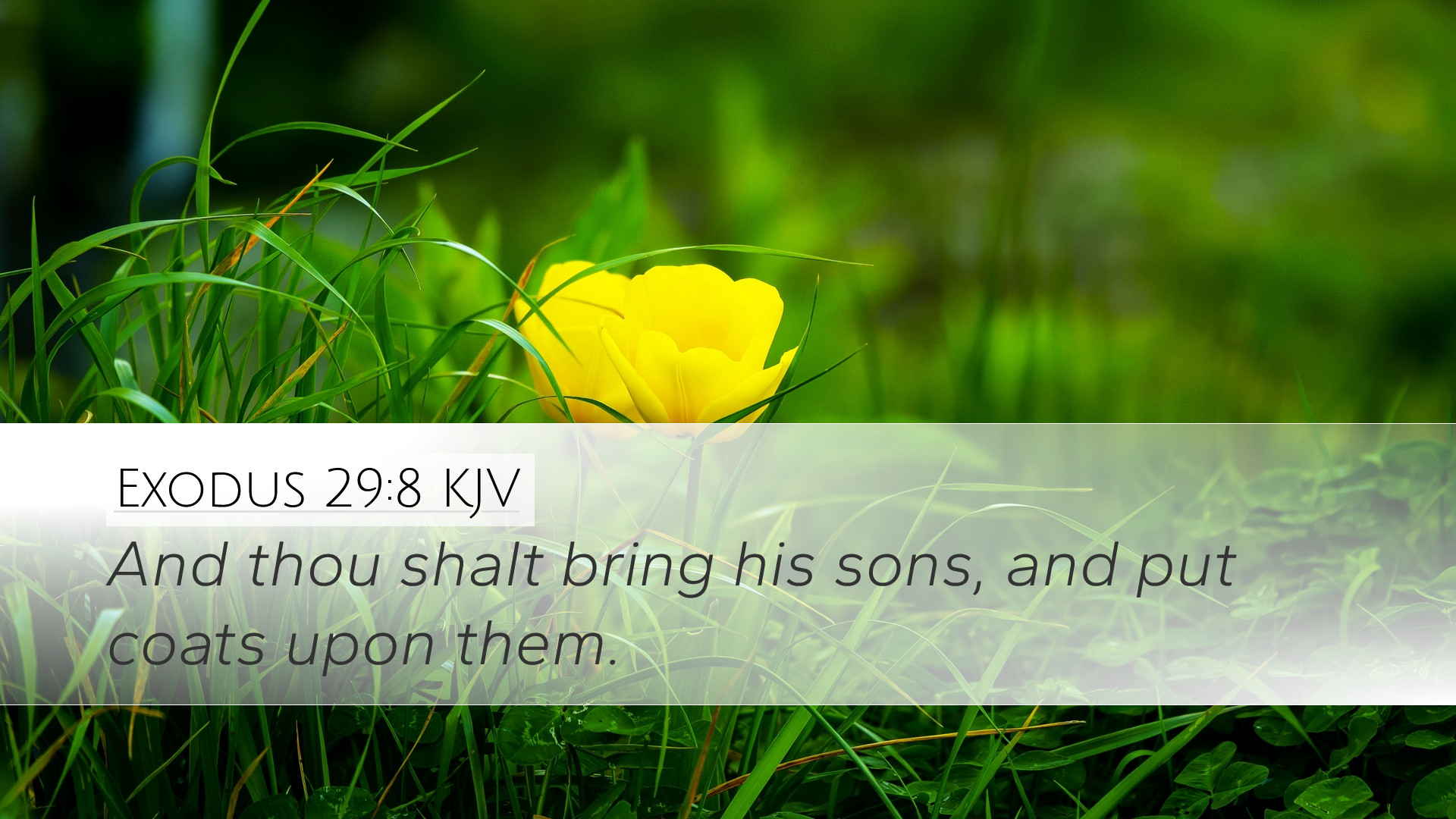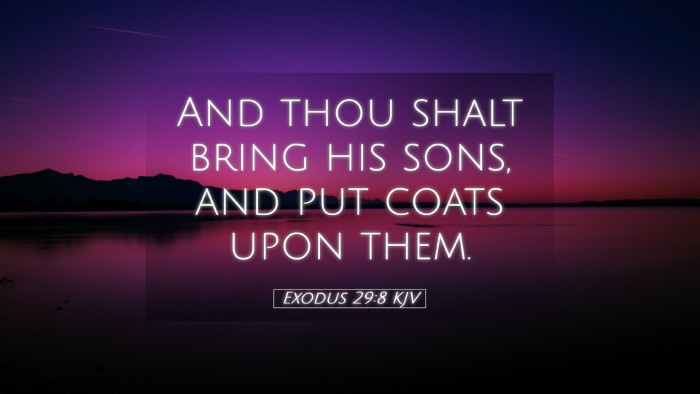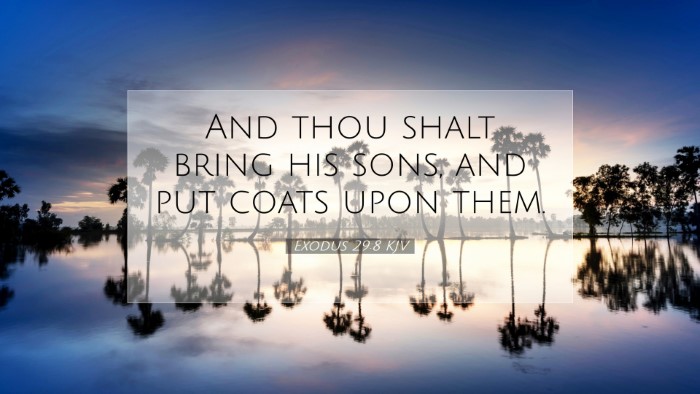Exodus 29:8 - Commentary Overview
Verse: "Then thou shalt bring the bullock before the tabernacle of the congregation: and Aaron and his sons shall put their hands upon the head of the bullock." (Exodus 29:8)
Introduction
The passage of Exodus 29 contains significant instructions concerning the initiation of the priests, specifically Aaron and his sons, into their sacred office. This verse is pivotal as it marks the act of consecration, inviting profound theological reflections on the role of sacrifice and the transfer of sin, themes that resonate throughout Scripture.
Theological Significance
1. The Symbolism of the Bullock
In the context of Exodus 29:8, the bullock represents several layers of meaning:
- Atonement: The offering of the bullock serves as a substitute, foreshadowing the ultimate sacrifice of Christ. Matthew Henry notes that the animal's shedding of blood symbolizes the seriousness of sin and the cost of redemption.
- Consecration: The use of the bullock signifies a holy act. Albert Barnes emphasizes that the act is not merely ritualistic; it marks the separation of Aaron and his sons from the common to the sacred, thus underlining their new role as mediators between God and Israel.
- Transfer of Sin: Adam Clarke points out that the laying on of hands by Aaron and his sons represents the transfer of guilt from the individuals to the sacrifice, highlighting the principle that the sinner must bring an offering for atonement.
Ritual Actions Explained
The act of laying hands upon the bullock is laden with meaning:
- Identification: By placing their hands on the bullock, the priests identify with the animal being offered. This act signifies that the sins of the priests are being symbolically transferred to the animal, as pointed out by Clarke.
- Consecration of the Priesthood: Henry notes that this act not only signifies guilt but initiates a lifetime of service, marking the beginning of their journey as mediators under God’s covenant.
- Public Acknowledgement: This ritual observable by the congregation serves to publicize the sins and the need for sacrifice, reinforcing the communal aspect of sin and atonement.
Historical Context
Understanding the cultural and historical context surrounding Exodus 29 is crucial for interpretation:
- Priestly Office: The establishment of Aaron and his sons as priests was unique to Israel, setting them apart from other nations. The sacrificial system provided a tangible means for the people to connect with the divine, which Barnes highlights as crucial for Israel's spiritual identity.
- Liturgical Framework: This passage functions within a larger liturgical framework that includes various offerings and sacrifices intended to purify, consecrate, and mediate between God and His people.
Application for Today
The themes found within this verse continue to resonate in the context of contemporary faith communities:
- Understanding Sacrifice: Modern believers are reminded of the costly nature of sin and its implications for personal faith. The sacrificial system illustrates the severity of transgression against a holy God.
- Role of Clergy: Those in positions of spiritual leadership today can reflect on the weight of their calling and the necessity of being set apart for holy service.
- Acts of Worship: The communal nature of this rite highlights the importance of collective worship and accountability among believers.
Conclusion
Exodus 29:8 encapsulates fundamental themes of sacrifice and consecration within the priestly context. As leaders and community members engage with this text, they should reflect on the deep implications of what it means to be chosen and set apart for God's service. The insights from historical commentaries by Matthew Henry, Albert Barnes, and Adam Clarke provide a rich backdrop for understanding this vital portion of God's instruction to Israel.


